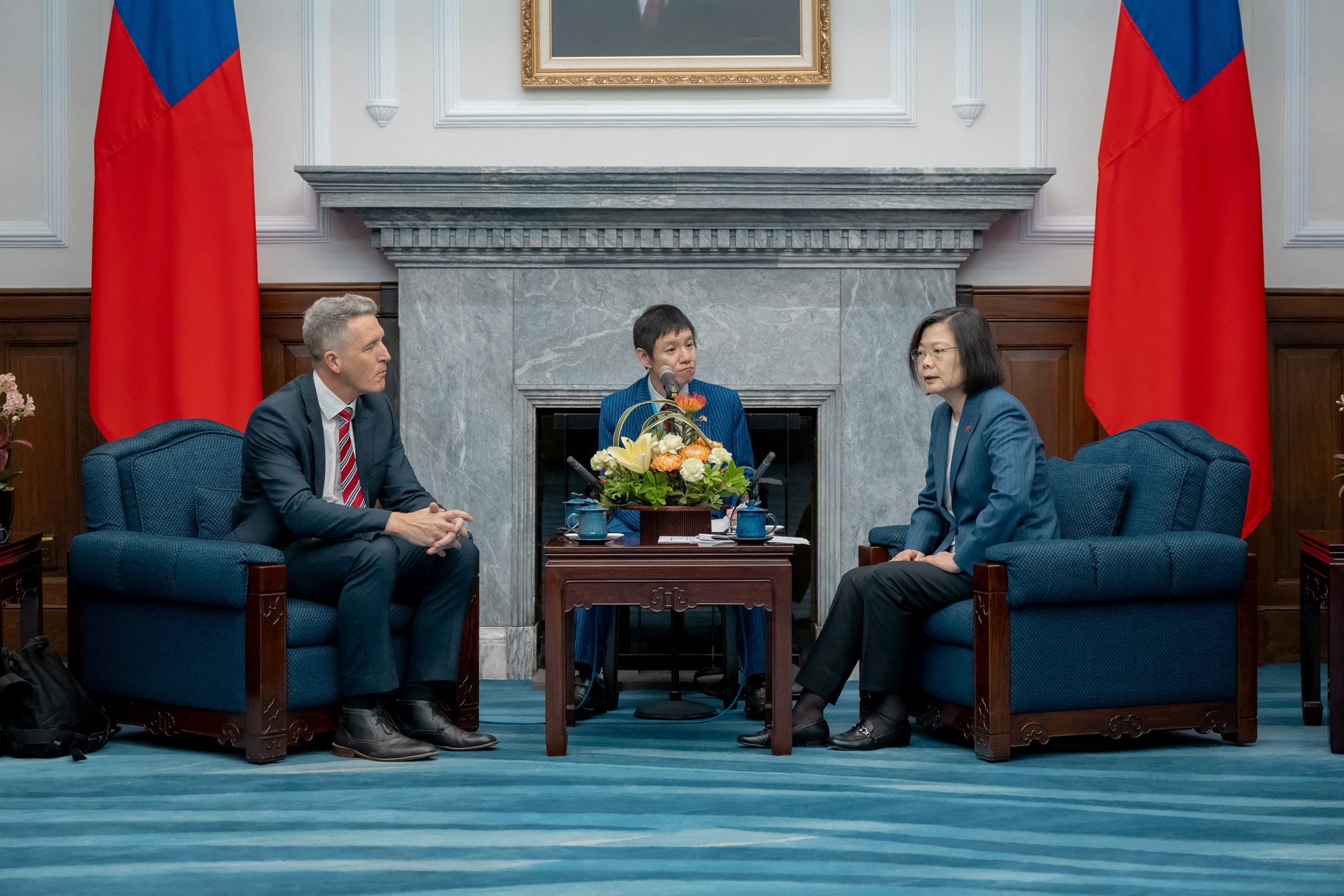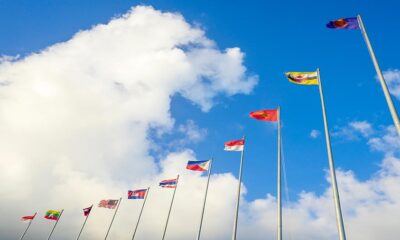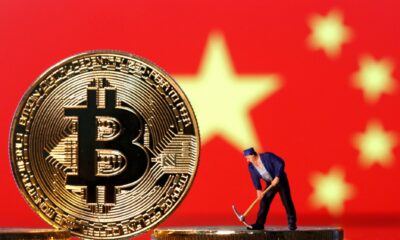Trade
Australia’s trade access agenda should take advantage of Taiwan

Author: Benjamin Herscovitch, ANU
Even as the chokehold of Beijing’s economic coercion loosens, trade diversification remains the mantra in Canberra. The Anthony Albanese government has picked up, with gusto, predecessor Scott Morrison’s mission of getting Australian exports to more markets to offset perceived over-reliance on China.
In just shy of 18 months in the portfolio, Trade Minister Don Farrell has presided over the entry into force of free trade agreements with India and the United Kingdom, as well as pressing for progress on negotiations with the European Union. Meanwhile, Australia’s free trade agreement with ASEAN and New Zealand is being upgraded and the United Kingdom has joined the Comprehensive and Progressive Agreement for Trans-Pacific Partnership (CPTPP).
Despite these trade wins, there’s still a big Taiwan-shaped hole in Australia’s efforts to moderate its export dependence on China.
The Taiwanese economy sucked in a colossal AU$30 billion worth of Australian goods in 2022, making it Australia’s fourth biggest merchandise export destination. As well as eclipsing even India and the European Union, it was nearly 10 times more lucrative for Australian goods exporters than the United Kingdom and more than double as valuable as New Zealand. Australia’s goods exports to Taiwan’s market of just under 24 million people were worth approximately 40 per cent of the total goods exports to the 10-member state ASEAN market of 667 million people.
This doesn’t mean that Australia should abandon or downplay the importance of free trade agreements with India, the European Union, the United Kingdom and others. The long-term benefits for Australian exporters are likely to be especially great in the case of the trade agreements with the European Union and Indian markets given the size and wealth of the former and the stupendous growth potential of the latter.
But if it’s worth Australia’s energy to pursue a bilateral trade agreement with the United Kingdom or bring it into the CPTPP, then there’s a compelling economic case for doing the same with Taiwan — a market vastly more important for Australian exporters. This Taiwan oversight is particularly glaring when looking at the overall picture of Australia’s trade ties.
Despite shared membership of the World Trade Organization and Asia–Pacific Economic Cooperation, Taiwan is conspicuously absent from Australia’s free trade agreements. Of Australia’s top 10 export destinations in 2022, Taiwan was the only one in which Australian exporters didn’t enjoy the benefits of either a bilateral or regional free trade agreement.
True, Australia’s exports to Taiwan by value are dominated by energy and minerals, which don’t face high tariffs. But with agricultural imports to Taiwan subjected to average tariff rates of nearly 16 per cent, a free trade agreement would give Australian primary producers a competitive edge in one of Asia’s wealthiest consumer markets. Given that it was Australia’s wine growers and lobster fishers that suffered most at the hands of China’s economic coercion, there is a powerful case for gaining better access for Australian agricultural products in reliable export markets like Taiwan.
Regardless of the economic logic, any push for freer trade with Taiwan can’t escape the constraints of geopolitics.
Getting Taiwan into the CPTPP will probably remain an implausibly long shot given Beijing’s competing bid and opposition to Taipei joining combined with the trade pact’s consensus-based accession process. But that still leaves open the option of pursuing a much more achievable bilateral free trade agreement with Taiwan. With Australia already Taiwan’s seventh-largest trading partner, this is an option that Taipei also supports.
Having pressured Canberra out of its previous plan to negotiate a free trade agreement with Taipei during the Malcolm Turnbull government, Beijing would oppose moves to formally liberalise trade.
Although Singapore and New Zealand already have free trade agreements with Taiwan, these were signed in 2013 when the more Beijing-friendly Nationalist government was in power and when China wasn’t trying so hard to internationally isolate Taipei. Despite likely opposition from Beijing, the Albanese government shouldn’t allow its trade access agenda to be held hostage to Chinese government concerns. Not least because Beijing’s enthusiasm for relationship repair probably gives Canberra more licence to take positions that China doesn’t like.
Since mid-2022, Beijing has…
Trade
Self-Reliance and Openness: Core Principles of China’s Third Plenary Session

The Third Plenum communique from the CCP indicates a prioritization of stability and compromise in response to China’s economic challenges. It highlights the concept of Chinese-style modernization and establishes political guidelines for balancing regulation and market forces.
The CCP’s Third Plenum communique signals a focus on stability and compromise in the face of China’s economic challenges. It emphasises Chinese-style modernisation and sets political directions for balancing regulation and market forces. While not as groundbreaking as previous plenums, it acknowledges the importance of market mechanisms and technological self-reliance, aiming to address issues like high youth unemployment and private sector uncertainty. The communique seeks to navigate the complexities of global competition and domestic innovation, potentially reshaping global supply chains and trade dynamics. Overall, it presents a pragmatic blueprint for China’s economic future.
Source : Self-reliance and openness central pillars of China’s Third Plenum | East Asia Forum
Trade
Trade Prevails Over Political Persuasions in China-Germany Relations

China and Germany maintain a strong bilateral relationship, rooted in economic cooperation despite ideological differences. Recent visits and agreements focus on expanding trade and addressing mutual concerns, navigating challenges while nurturing ties.
Evolving Bilateral Ties
China and Germany share a strong bilateral relationship, rooted in history since 1972. This connection has seen moments of cooperation intertwined with periods of tension. German Chancellor Olaf Scholz’s April 2024 visit underscores Germany’s commitment to fostering this partnership, reflecting a mutual interest in maintaining economic ties despite ideological differences.
Economic Pragmatism
As the second and third largest global economies, China and Germany’s economic interdependence is crucial. Germany emerged as China’s primary trading partner in 2023, with trade values reaching €254.4 billion (US$280 billion). In response to global scrutiny, Germany has taken a balanced approach, emphasizing economic stability over political discord. This was evident during Scholz’s prior visit in November 2022, where his diplomatic tone contrasted with broader EU sentiments.
Facing Challenges Together
Despite increasing public skepticism in Germany regarding China’s global influence and human rights issues, both nations continue to seek common ground. Their October 2023 Joint Statement highlights intentions to pursue cooperation in areas like carbon neutrality and open markets. To navigate these complex terrains, Germany can utilize its institutional frameworks to enhance dialogue, while also considering supply chain diversification to reduce dependency on China. The intertwining nature of their economies suggests that, despite challenges, both countries will continue to prioritize their substantial trade relations.
Source : Trade trumps political persuasions in China–Germany relations
Trade
Fixing fragmentation in the settlement of international trade disputes

Fragmentation in global trade due to the lack of development in multilateral trade rules at the WTO has led to an increase in FTAs. The Appellate Body impasse has further exacerbated fragmentation, requiring a multilateral approach for reform.
Fragmentation in Global Trade
Fragmentation in global trade is not new. With the slow development of multilateral trade rules at the World Trade Organization (WTO), governments have turned to free trade agreements (FTAs). As of 2023, almost 600 bilateral and regional trade agreements have been notified to the WTO, leading to growing fragmentation in trade rules, business activities, and international relations. But until recently, trade dispute settlements have predominantly remained within the WTO.
Challenges with WTO Dispute Settlement
The demise of the Appellate Body increased fragmentation in both the interpretation and enforcement of trade law. A small number of WTO Members created the Multi-Party Interim Appeal Arbitration Arrangement (MPIA) as a temporary solution, but in its current form, it cannot properly address fragmentation. Since its creation in 2020, the MPIA has only attracted 26 parties, and its rulings have not been consistent with previous decisions made by the Appellate Body, rendering WTO case law increasingly fragmented.
The Path Forward for Global Trade
Maintaining the integrity and predictability of the global trading system while reducing fragmentation requires restoring the WTO’s authority. At the 12th WTO Ministerial Conference in 2022, governments agreed to re-establish a functional dispute settlement system by 2024. Reaching a consensus will be difficult, and negotiations will take time. A critical mass-based, open plurilateral approach provides a viable alternative way to reform the appellate mechanism, as WTO Members are committed to reforming the dispute settlement system.
Source : Fixing fragmentation in the settlement of international trade disputes






